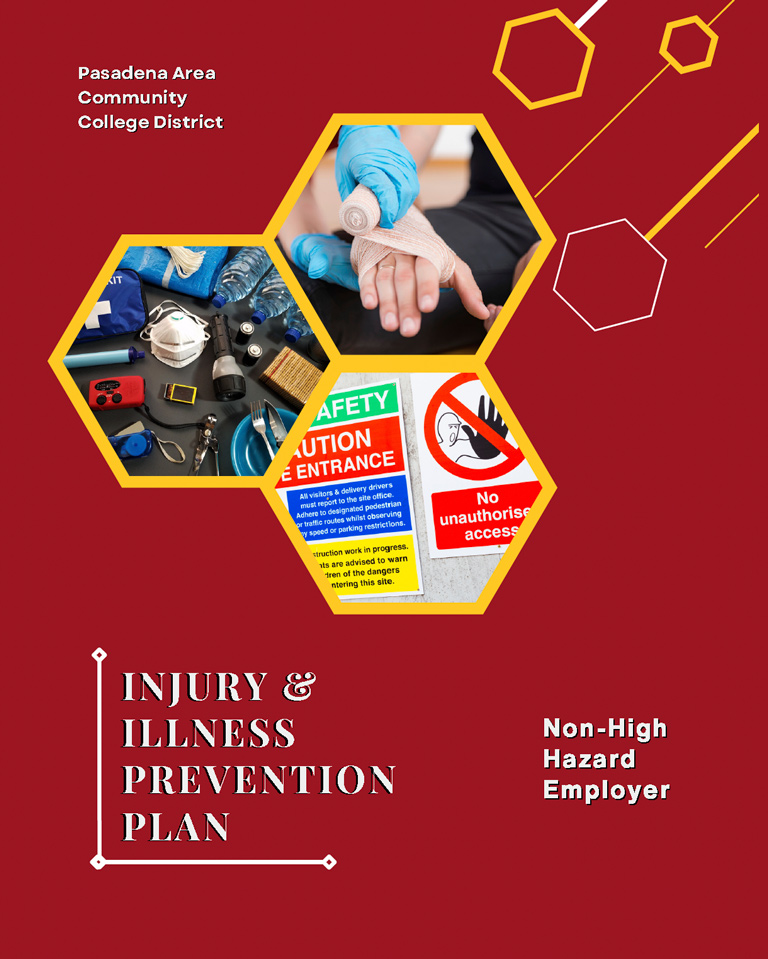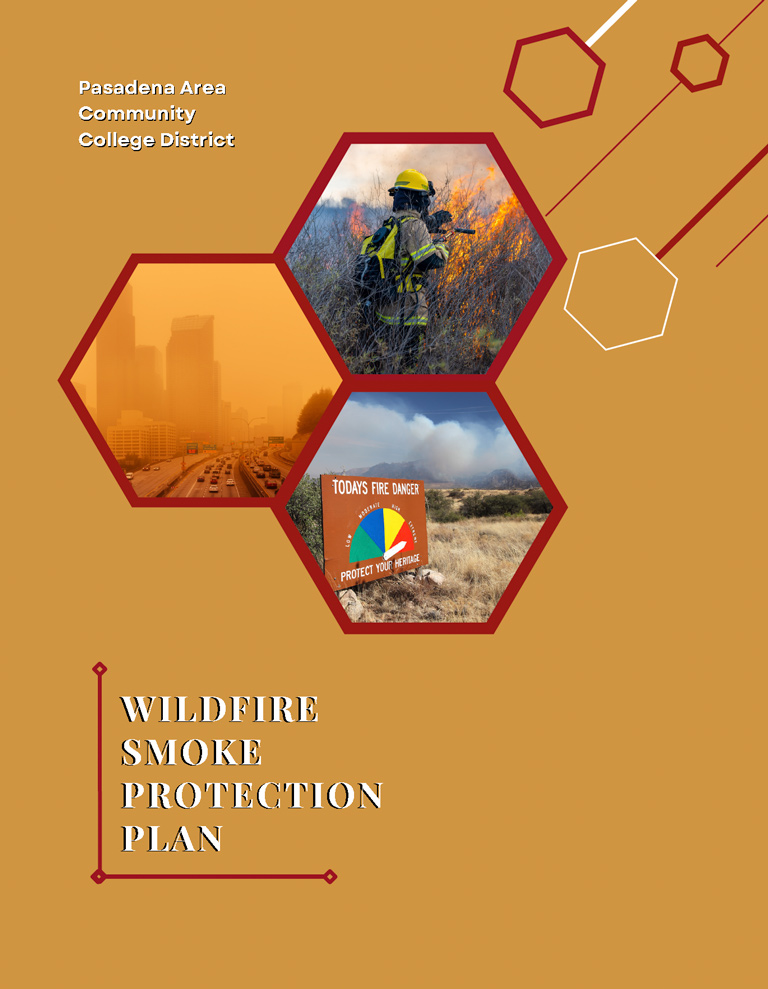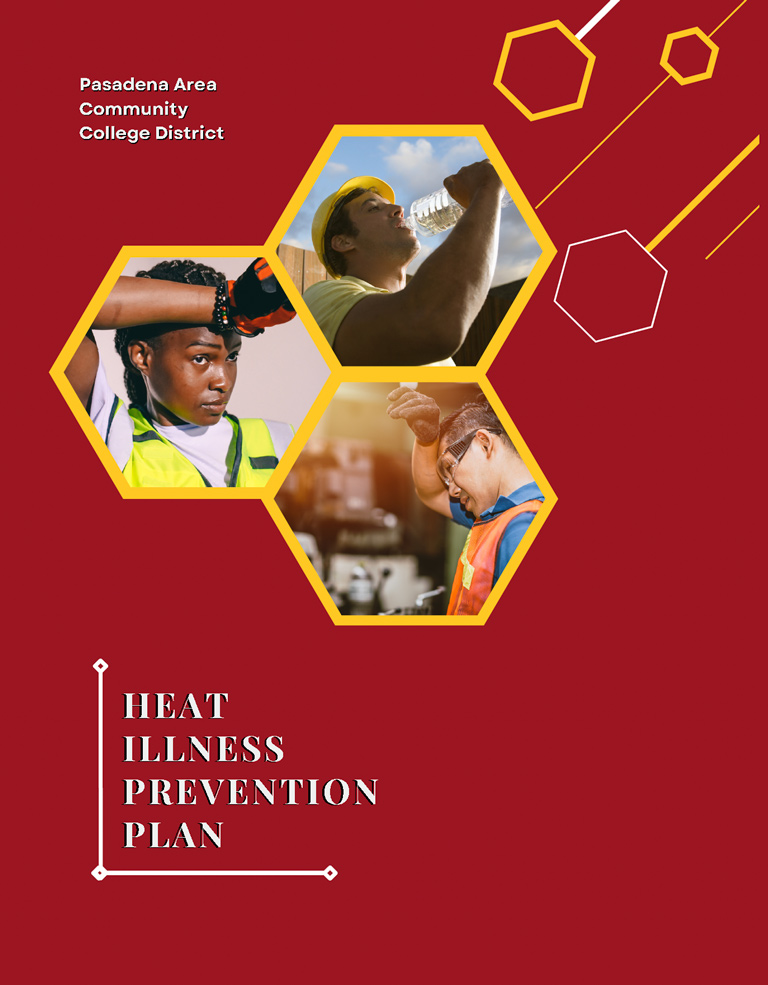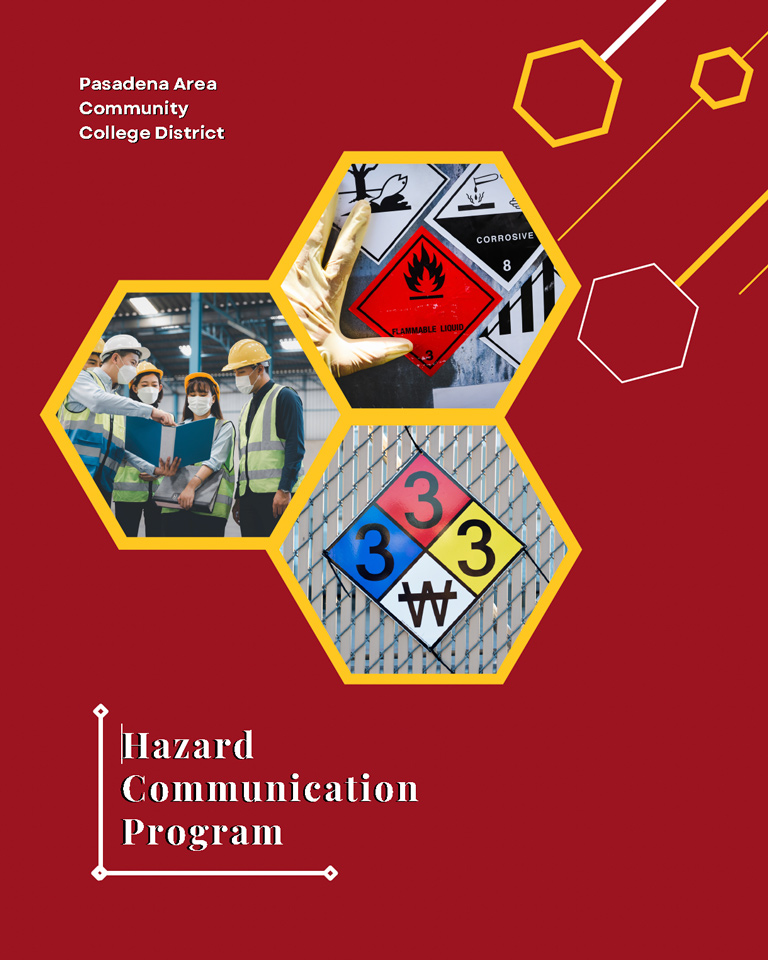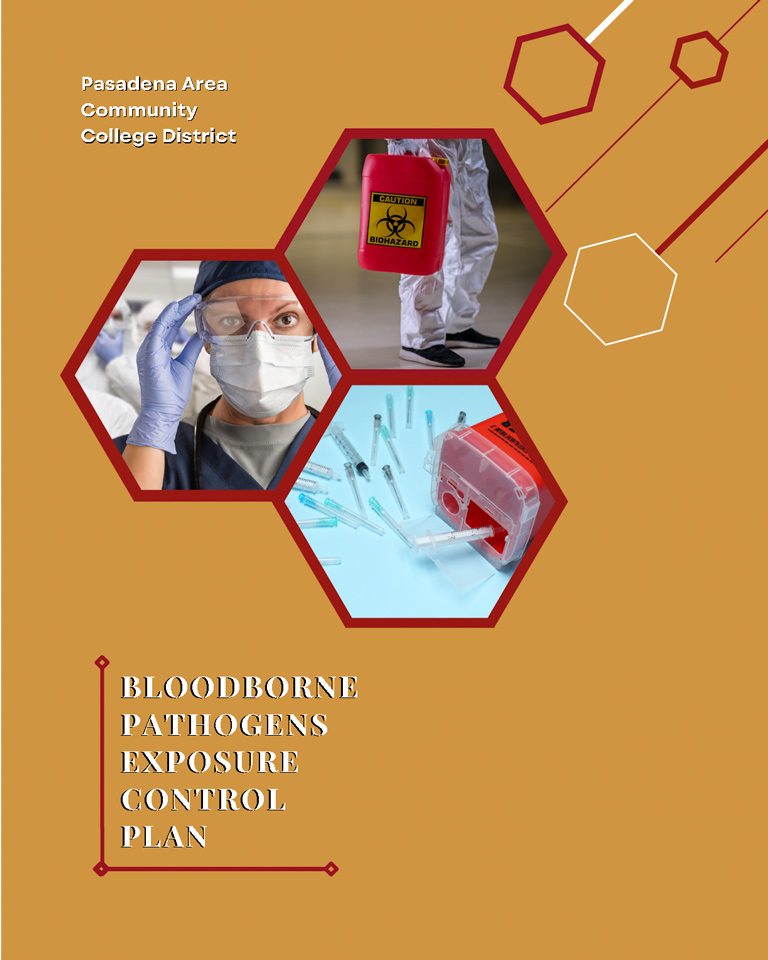Safety & Training
Illness & Injury Prevention Programs
Illness & Injury Prevention Program - Non-High Hazard Employer
Every California employer must establish, implement and maintain a written Injury and Illness Prevention Program (IIPP). A copy must be maintained at each workplace or at a central worksite if the employer has non-fixed worksites. The requirements for establishing, implementing and maintaining an effective written IIPP are contained in Title 8 of the California Code of Regulations, Section 3203 (T8 CCR 3203).
What is the purpose of the IIPP?
The purpose of the Injury and Illness Prevention Program (IIPP) is to create and maintain
a safe, healthy, and productive work environment for all employees. It establishes
clear procedures for identifying, evaluating, and correcting workplace hazards before
they cause harm. In alignment with California OSHA requirements, the IIPP provides
a structured approach for preventing injuries and illnesses, promoting safety awareness,
and ensuring that every employee understands their role in maintaining a safe workplace.
Who is responsible for workplace safety?
Everyone plays a part, but leaders guide the effort. Vice Presidents, Executive Directors,
and the Chief of Campus Police oversee the IIPP. Department Directors and Supervisors
enforce safety rules and ensure training. Employees must follow safety rules, wear
protective gear, report unsafe conditions, and attend training.
How does the District make sure employees follow safety rules?
Each department should promote compliance through communication, regular training,
safety performance reviews, rewards for safe work, and retraining when needed. Employees
who ignore safety rules may face disciplinary action.
How does the District communicate safety information?
We encourage open conversations about safety. Employees can report hazards without
fear. We use orientations, meetings, safety postings, Safety Data Sheets, and anonymous
reports to share information.
How are workplace hazards found and evaluated?
The workplace is regularly inspected by the Facilities Services depart to find and
fix problems. Campus-wide inspections are done yearly, after accidents, when new equipment
or chemicals are introduced, or when new risks are found. Supervisors make sure all
hazards are identified and rectified.
What happens if someone gets hurt or exposed to danger at work? Employees must report any incident or injury to their supervisor immediately. Supervisors, in coordination with Risk Management, will promptly investigate the event, interview witnesses, and identify the root cause. Corrective actions will then be taken to eliminate hazards and prevent similar incidents from happening in the future. All findings and actions are documented. Injured employees should also complete and submit a workers’ compensation claim as soon as possible.
How are unsafe conditions fixed?
The District addresses dangerous conditions right away. If a hazard poses immediate
danger, employees may be evacuated. We use engineering solutions, new procedures,
protective gear, and training to make the workplace safer.
When and how do employees get safety training?
All employees—including supervisors—receive safety training from their supervisors
when hired, when moving to new jobs, or when new hazards are found. Training covers
necessary emergency procedures, lifting safety, fire prevention, housekeeping, chemical
safety, and how to report hazards.
How are safety records kept?
Safety records are in the department/division were the incident occurred. Inspection
reports, investigations, and training records are to be kept for at least five (5)
years. Medical and exposure records are kept for the length of employment plus 30
years.
How can employees access the IIPP?
Employees and their representatives can view or download a copy of the jury and Illness
Prevention Program (IIPP)PDF.
What should every employee remember?
Safety is everyone’s responsibility. Report hazards or injuries right away. Attend
all safety trainings. Use protective gear and follow procedures to keep Pasadena City
College a safe place to work.
Wildfire Smoke Protection Plan
The Wildfire Smoke Protection Plan, aligned with Cal OSHA T8 CCR 5141.1, is activated when the PM2.5 Air Quality Index (AQI) is 151 or more and employees are likely to be exposed to wildfire smoke. Exceptions to the plan include enclosed buildings or vehicles with filtered air and closed openings, worksites where PM2.5 measurements reveal AQI less than 151, and scenarios where employees face exposure of AQI 151 or more for less than an hour during their shift.
When does the Wildfire Smoke Protection Plan apply to my work?
The plan applies whenever the current AQI for PM2.5 is 151 or greater and employees
are reasonably anticipated to be exposed to wildfire smoke.
Are there situations where the plan does NOT apply?
Yes. The plan does not apply when you are working inside enclosed buildings with windows
and doors closed and mechanical filtration is operating, when you are inside enclosed
vehicles with windows and doors closed and a functioning cabin air filter is used,
when worksite PM2.5 measurements show the AQI is below 151, or when an employee’s
exposure to AQI ≥151 is less than one hour total during the shift.
Who is responsible for making sure wildfire smoke protections are followed?
Designated Administrators — the Assistant Superintendent/VP of Business & College
Services, the Executive Director of Business Services, and the Executive Director
of Facilities & Construction Services — are responsible for implementing, maintaining,
and updating the plan, while supervisors are responsible for on-the-ground compliance,
employee training, ensuring respirator availability, and monitoring exposures.
What must supervisors do during wildfire smoke events?
Supervisors must check the current AQI for PM2.5 before each shift and periodically
during the day when AQI exceeds 151, inform employees of the current AQI and available
protective measures, implement required control measures for outdoor work, ensure
N95 respirators are available and enforce respirator use when AQI exceeds 500, and
take action when employees report symptoms by providing clean-air breaks or removing
them from exposure.
How is AQI determined for our worksite?
AQI may be determined by checking official sources such as AirNow, the Wildland Fire
Air Quality Response Program, the U.S. Forest Service, the California Air Resources
Board, or the local air pollution control district; by receiving AQI forecasts and
updates via phone, text, email, or other effective employer-provided methods; or by
measuring PM2.5 directly at the worksite with an approved monitor and converting PM2.5
concentrations to AQI using the Appendix A conversion tables.
What must employees do when working outdoors during wildfire smoke conditions?
Employees must attend required training, wear a respirator when the AQI for PM2.5
is greater than 500, request an N95 respirator for voluntary use when AQI is 151 or
greater if they choose to use one, and promptly report worsening air quality or symptoms
such as asthma attacks, chest pain, nausea, or difficulty breathing to their supervisor.
What control measures must the District use to protect us?
The plan requires engineering controls, such as providing enclosed buildings, structures,
or vehicles with filtered air to reduce PM2.5 exposure to below an AQI of 151; administrative
controls, such as relocating work to areas with lower AQI, changing work schedules,
reducing work intensity, or providing additional rest periods; and respiratory protection,
where respirators are provided for voluntary use at AQI ≥151 and are required when
AQI exceeds 500 in accordance with T8 CCR 5144.
When will the District provide N95 respirators?
The District must provide NIOSH-approved respirators (such as N95 filtering facepiece
respirators) for voluntary use when the current AQI for PM2.5 is equal to or greater
than 151 and not exceeding 500, and respirator use is required when the AQI for PM2.5
exceeds 500 so that the PM2.5 level inside the respirator corresponds to an AQI less
than 151.
What symptoms should I report immediately?
Employees must inform their supervisor if they experience symptoms such as persistent
coughing, wheezing, asthma-like symptoms, chest pain, difficulty breathing, nausea,
dizziness, or any other signs of adverse effects from smoke exposure; supervisors
are required to respond by providing clean-air breaks, relocating the employee, or
removing the employee from exposure and arranging medical care if needed.
What training does the plan require employees to receive?
Employees must receive training that includes the information listed in Appendix B:
the health effects of wildfire smoke, how to obtain and interpret the AQI for PM2.5,
the employer’s required actions when AQI is 151 or greater, proper respirator use
and limitations, and the employee’s right to seek medical treatment without fear of
reprisal.
Heat Illness Prevention Plan
California employers with any outdoor places of employment should comply with the Heat Illness Prevention standard, California Code of Regulations, title 8, section 3395 (8 CCR 3395). These procedures have been created to assist employers in establishing heat illness prevention procedures and reducing work-related heat illnesses among their employees.
When does the Heat Illness Prevention Plan require extra action?
The plan is triggered for outdoor work when temperatures are expected to reach 80°F
or higher; additional high-heat protocols kick in at 95°F and during declared heat
waves.
Who’s responsible for making the plan happen on site?
The Administrators (Assistant Superintendent/VP Business & College Services; Executive
Director, Business Services; Assistant Superintendent/VP HR; Exec. Director, Facilities
& Construction; and Chief of Campus Police & Safety) maintain the plan; supervisors/leads
are responsible for on-the-ground implementation and training.
What hydration is required/available on outdoor shifts?
Drinking water is available as desired; employers provide water containers large enough
so at least two quarts per employee are available at the start of the shift. Employees
are encouraged to drink small amounts frequently.
How much should I drink while working in the heat?
The plan advises about 1 cup (8 oz) every 15–20 minutes (≈24–32 oz per hour). It warns
not to exceed 48 oz (1½ quarts) per hour to avoid hyponatremia.
Where and when can I take a cool-down break or access shade?
Shaded coverings (tents/canopies) or air-conditioned indoor areas must be available
when the temperature equals or exceeds 80°F. Employees are encouraged to take brief
cool-down breaks as needed and may use indoor AC where practical.
What changes when temperatures reach 95°F or during a heat wave?
The District implements additional preventive actions (increased water/rest breaks,
closer monitoring, pre-shift meetings reviewing procedures) and may modify work schedules
or move heavy tasks to cooler times.
How often must the AQ/worksite weather be checked?
Supervisors monitor the weather forecast before each workday and adjust schedules,
rest breaks, or cancel/modify work when high temperatures are expected. Meetings are
held when temps are forecast to exceed 80°F.
What symptoms should I report immediately and what will happen?
Report symptoms such as dizziness, nausea, headache, confusion, fainting, muscle cramps,
rapid pulse, or severe weakness. Supervisors will provide a cool-down rest in shade/AC,
monitor you, offer water/first aid, and call emergency services if symptoms indicate
severe heat illness.
What are the emergency contacts and immediate steps for severe heat illness?
For emergency medical services contact Campus Police (626) 585-7484 or 911. While waiting, move the employee to shade/AC, remove excess clothing, apply ice
packs to armpits/groin, use a fan, and do not leave the employee unattended.
What training will I and my supervisor receive?
All employees and supervisors receive training before working outdoors and annual
retraining covering hydration, shade, high-heat procedures, acclimatization, emergency
response, recognition of heat illness, and how to summon emergency services; supervisors
receive extra training on monitoring, modifying work, and first aid.
Hazard Communication Program
Employers in California with employees working with chemicals are required to establish, implement, and maintain an effective written Hazard Communication (HazCom) Program that addresses hazards specific to chemicals they are, or may be exposed to. The requirements are set forth in California Code of Regulations, title 8, section 5194.
What is the purpose of the HazCom Program?
To identify, assess, and manage chemical hazards at work and ensure employees know
what hazardous chemicals they may encounter.
Who are the Administrators responsible for the program?
The Assistant Superintendent/VP Business & College Services; Exec. Director, Business
Services; Assistant Superintendent/VP Human Resources; Exec. Director, Facilities
& Construction Services; and Chief of Campus Police & Safety Services. They maintain
and update the program (annually or as needed).
Where do I find Safety Data Sheets (SDSs) and the chemical inventory?
Legible SDSs and the up-to-date hazardous chemical inventory are kept centrally in
each work area (hard copy) and electronically where employees can access them during
all shifts.
What must be on a manufacturer container label?
Product identifier, signal word, hazard statements, pictograms, precautionary statements,
and manufacturer/importer name/address/phone. Do not remove or deface labels.
How must workplace/secondary containers be labeled?
Either duplicate the original label or include the product identifier plus words/pictures/symbols
that give general hazard information together with other info employees can access
under the program. Portable immediate-use containers are exempt.
How are SDS updates handled?
Obtain current SDSs for each chemical. Significant SDS updates must be communicated
to employees within 30 days; vital information must be updated on the SDS within 3 months. SDSs are retained as exposure/medical records per T8CCR 3204.
What training will I receive and when?
HazCom training at initial assignment and whenever a new chemical hazard is introduced.
Training covers HazCom rights, SDS/location, label reading, exposure controls (engineering/work
practices/PPE), symptoms, emergency/first aid procedures, and any non-routine tasks.
What information will I get before a hazardous non-routine task?
Your supervisor will explain specific hazards, measures taken to reduce risk (ventilation,
buddy system, respiratory program per T8 §5144, emergency procedures), and required
protective measures before work begins.
How are pipes and piping systems identified?
Above-ground pipes carrying hazardous chemicals will be identified per T8 CCR §3321;
before working near pipes you’ll be told pipe location, contents, hazards, and precautions
(Facilities Services can help identify piping).
What about contractors and temporary employees?
Contractors will be given two-way access to hazard information (labels/SDSs/Proposition
65 chemicals) and precautions. Temporary agency workers are treated as District employees
and included in the HazCom Program.
Bloodborne Pathogens
OSHA requires employers to perform an exposure determination concerning which employees may incur occupational exposure to blood or other potentially infectious materials. The exposure determination is made without regard to the use of personal protective equipment (i.e. employees are considered to be exposed even if they wear personal protective equipment.) This exposure determination is required to list all job classifications in which all employees may be expected to incur such occupational exposure, regardless of frequency.
Who must follow the Bloodborne Pathogens ECP?
Employees in departments with potential occupational exposure (Campus Police & Safety,
CTE, Child Development, Culinary, Fire Tech, Facilities, Health Services, Natural
Sciences, Kinesiology/Health & Athletics, Disabled Student Services) must follow the
ECP.
Who administers and maintains the ECP?
The Administrators (Assistant Superintendent/VP Business & College Services; Executive
Director of Business Services; Assistant Superintendent/VP Human Resources; Executive
Director of Facilities & Construction Services; Chief of Campus Police & Safety Services)
implement, review, and update the plan.
How do I get a copy of the ECP or training?
Request a copy from your supervisor or download it from Risk Management Services;
initial and annual training is provided by your department’s Responsible Party or
via Keenan SafeColleges.
What are the universal precautions I must follow?
Treat all blood/OPIM as infectious: practice hand hygiene, use appropriate PPE (gloves,
eye/face protection, gowns), and follow safe work practices.
What PPE will I be provided and how must I use it?
The employer provides PPE at no cost (single-use gloves, utility gloves, eye protection,
gowns/aprons, face shields, etc.). Remove contaminated PPE before leaving the work
area and wash hands after removal.
What engineering controls and work practices protect me from sharps/blood?
Use provided engineering controls (sharps containers, needleless systems, biological
safety cabinets) and follow work-practice controls (safe needle disposal, minimize
splashes, decontaminate surfaces). Sharps containers must be inspected and replaced
to avoid overfilling.
How do I handle regulated waste and sharps on site?
Place regulated waste in closable, leak-resistant, labeled containers or red bags;
close and seal sharps containers per manufacturer instructions and send to designated
pickup/disposal areas.
What do I do if I have a needlestick or other exposure?
Immediately inform your supervisor and Risk Management Services, receive first aid,
contact the District’s Company Nurse triage for evaluation and follow-up, and complete
the incident report for medical and claim follow-up.
How are items and areas labeled for biohazard safety?
Regulated waste and storage/transport containers must be labeled “BIOHAZARDOUS WASTE”
or “SHARPS WASTE” (fluorescent orange/red) or use red bags; signs with the biohazard
symbol and “BIOHAZARD” must be posted at entrances to applicable work areas.
What training and records are required?
Employees with exposure receive initial and annual training covering the ECP, PPE,
exposure response, hepatitis B vaccine info, and labels/signage. Training records
are kept ≥3 years; the Sharps Injury Log is retained and reviewed as required (maintained
≥5 years after the year covered).

